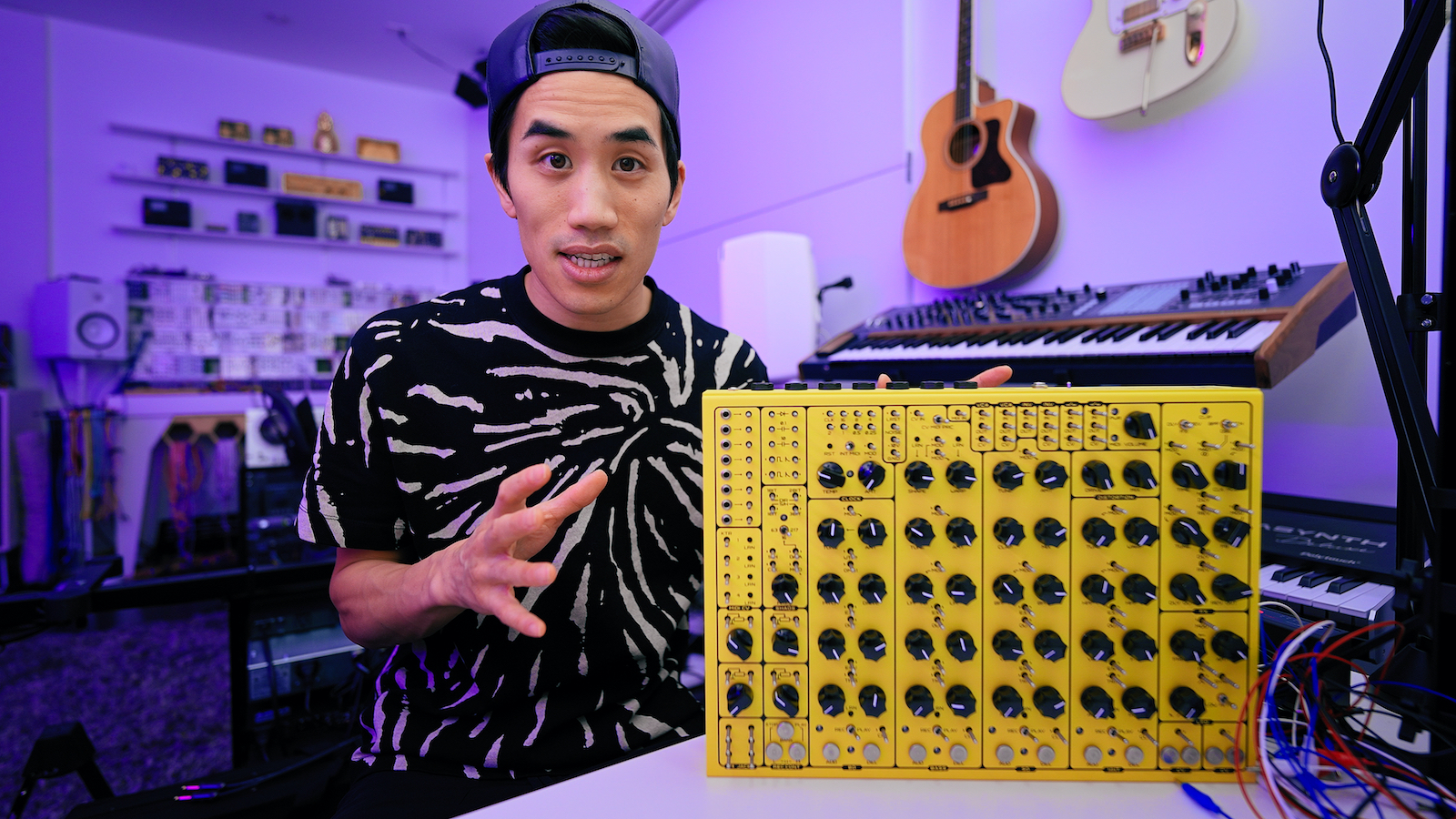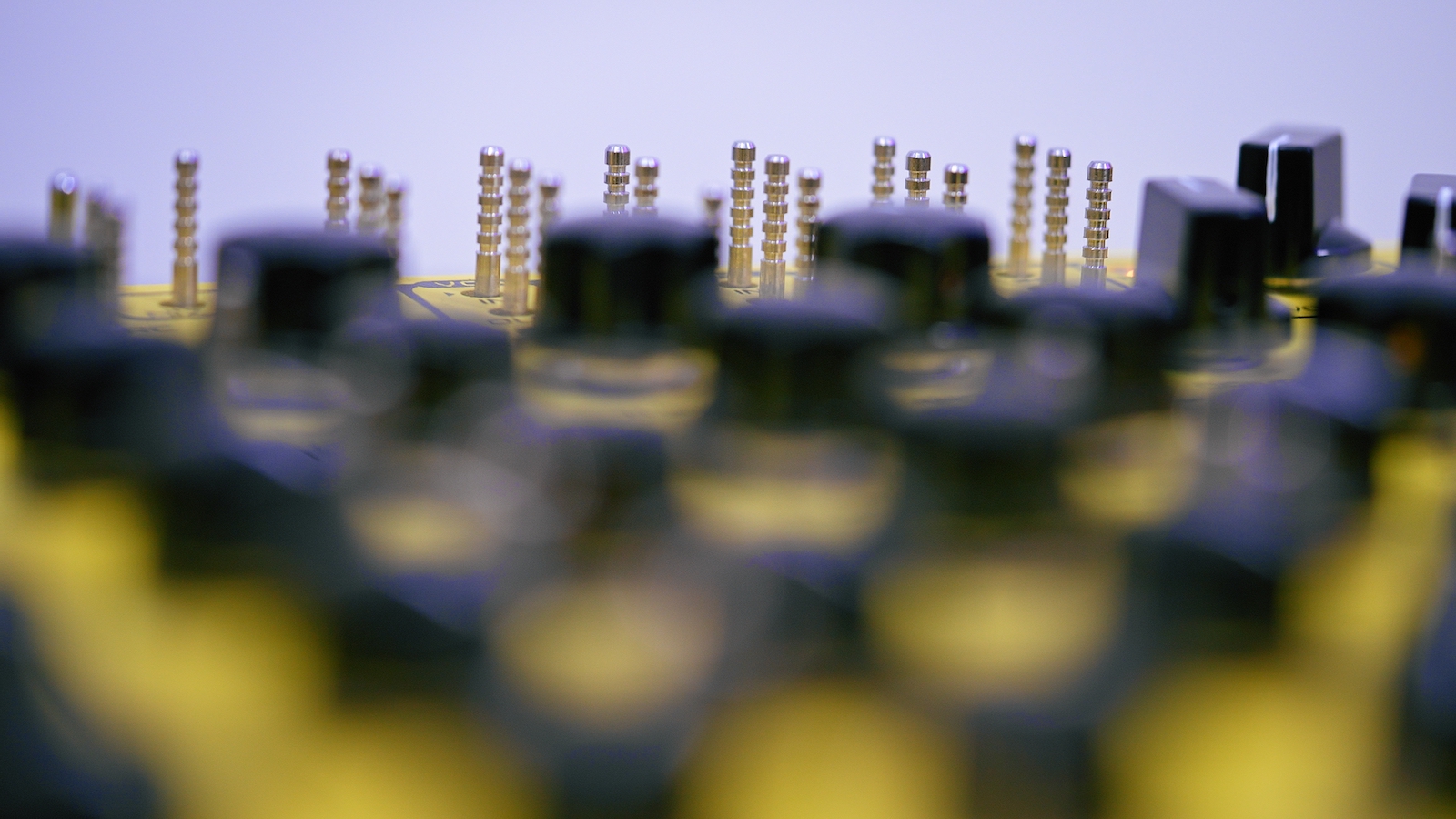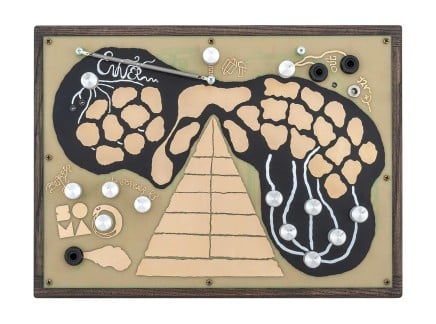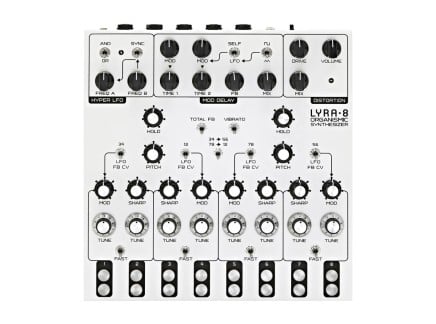Perfect Circuit presents the exclusive SOMA Laboratory Pulsar-23 Andrew Huang edition—a colorful new take on SOMA's modern cult classic semi-modular drum machine. Maintaining the same feature set as the standard Pulsar-23, this limited artist edition comes in a bright, loud yellow, and includes an exclusive alligator-clip-emblazoned hat. Available only from Perfect Circuit!
Pulsar-23 is a semi-modular drum machine with an open-ended approach that sidesteps and outright rejects classic drum machine tropes. Described by its creator Vlad Kreimer as "organismic," Pulsar-23 is all about building living, breathing, evolving rhythmic structures using alligator clip patch points and physical interaction. Like other SOMA devices, Pulsar-23 creates a seemingly organic connection between the musician and instrument, tapping into the deepest parts of your subconscious to rely on instinct and reaction rather than conscious decision-making. Musician + producer Andrew Huang, famous for his embrace of peculiar workflows, experimental sounds, and otherwise Weird Gear, brings the Pulsar-23 to life: turning its quirky, out-there approach into something simultaneously edgy, inspiring, and fun.
Because of Huang's unique approach to experimental instruments and his unwavering ability to turn dang near any sound into something musical, we wanted to take the opportunity to pick his brain: what is it about experimental instruments that is so attractive? What makes SOMA gear, and the Pulsar-23 in particular, so special? And how does he think about turning experimental sounds into music?
Head here to pick up your own Andrew Huang edition Pulsar-23—and read on for his insights on this amazing instrument.
Experimental Instruments, Pulsar-23, and Making Music
Perfect Circuit: We've seen on your YouTube channel that you've had the opportunity to use some really wild gear. We're curious about your attraction to all of this esoteric gear: what makes experimental instruments special/exciting to you? How do you find they wind up fitting into your practice? How does that vary from one device to another, and why?
Andrew Huang: Fun is the number one thing. An interesting instrument provides so much to explore. I really enjoy every aspect of it, from appreciating the design, to learning how to use it, to incorporating it into my work. I’m absolutely a gear head, but it usually comes down to what’s unique or special and how it can augment my creativity or workflow. Like my primary instrument is actually guitar and I don’t care at all about acquiring new guitars. My eyes are always on weird synths and effects. I will also say that they can be like a shortcut to inspiration. I always try to convey on my channel that you don’t need a whole lot to make music—but a fun new piece of kit can get you going a bit faster sometimes!
I jump between a lot of genres and approaches so there are lots of ways experimental instruments end up fitting in. It’s really fun to start an idea from a new instrument because you don’t have any habits with it, you’re in this exploratory state where you’re totally responding to what you’re hearing and feeling. Just having that different paradigm can also be great when you’re adding to an existing piece that needs a little something but you’re not sure what. Something I also love doing is just hitting record and making a bunch of noise for a while. It’s a bit of an edit job later, but you end up with great sounds you never would’ve gotten otherwise and they can come in handy for future projects.
PC: What initially attracted you to SOMA Laboratory? What was your first SOMA instrument? Which others have you tried since?
AH: I always thought SOMA instruments were beautiful and I liked their unique concepts as well as the focus on organic sounds and interactivity. I was pleasantly surprised one day to get an email from Vlad—we messaged for a bit and there was a strong mutual appreciation for each other’s craft. I ended up creating a video for them about The Pipe, including a song built around it, and they also sent over a Lyra-8 and Lyra8-FX with it. When Pulsar-23 came out later though it became my absolute favorite. Not only my favorite instrument of theirs but my favorite drum machine, period. I’ve also tried Ornament-8, which is a fascinating sequencer concept, and I use two Illuminators to control LEDs from my synths’ CV signals.
PC: Having now used a few SOMA designs, do you feel there's an underlying design direction/concept? What do you perceive all of SOMA's instruments have in common? In your eyes, in what significant conceptual ways do they differ from one another?
AH: SOMA is multi-faceted and almost paradoxical. There are both industrial and organic themes that run through their instruments, both in the materials used and the sounds they produce. Similarly, they have small, simple, affordable products alongside highly complex and luxuriously constructed ones—compare Enner and Ether for instance. I think the only constant is a tendency towards a darker and more experimental side of music. Even when you get their instruments singing beautifully there seems to be this haunting edge.
PC: Now that you've had some time with Pulsar-23...what do you think? What makes it special in the world of drum machines/synths/modular gear?
AH: Pulsar-23 is a really special instrument. I’m pretty picky about drum machines and don’t get too excited about things like 808 recreations. I like when they have their own unique character, features, or workflow, and the Pulsar has all of those. It’s got its own distinct sound that can still be used very flexibly. It’s got loads of things that many drum machines don’t, like the CV touch plates for hands-on control, some fantastic delays and reverbs, and even the ability to use it as an amazing sounding bass or lead synth. You can also run external audio through not only the onboard effects but also the sound circuitry itself. And workflow-wise, it’s got a one-of-a-kind looper/sequencer setup, and all these modular patch points that can take you weird places. Plus, rather than jacks, the patch points are exposed pins that you use with alligator clips, which means you can also just connect them through your fingers for a really interesting form of interaction.
The fact that it’s modular and gives you both 1/8”, 1/4”, and MIDI connectivity means it’s easy to interface with other gear. If there’s a feature you wish it had, like an additional LFO, you can add one!
Whether you think of it as a drum machine, synth, modular synth, effects processor…it’s unique in all those categories.
PC: What does Pulsar-23 offer (technically or creatively) to you, personally? How does it fit into your general workflow?
AH: I do a fair amount of beat-driven stuff and Pulsar-23 provides a great starting point for rhythmic tracks. It’s also super fun to experiment with as a sound design tool, heavily modulating the effects or building feedback patches. There are some great flavors of analog noise when you run the hi-hat channel at super low tunings. The looper/sequencer is great because you have the option for channels to be quantized or unquantized, and they all respond to different length gates as opposed to just triggers, giving you a lot more performance dynamics than a typical XOX-style sequencer.
PC: How do you take an experimental instrument like the Pulsar-23 that so strongly encourages a different and more free way of working with sound, and fit it into more structured tracks and songs?
AH: If I’m going to do something more structured, it’s always a purposeful decision. Sometimes I like a jam enough that I’ll decide to try and build it out, and then I’ll record what I have going on the Pulsar into Ableton, either as a stereo sequence with a bunch of live variations or sometimes making loops for each individual drum channel. I might also combine it with some Eurorack to build a more complete piece using only hardware before multitracking it to the DAW. And there are my aforementioned sound-making sessions, sometimes running it through other gear like guitar pedals, where I just mess around for a while and snip out samples that might be useful later.
While making my video on the Pulsar I got carried away and ended up making a whole dancey banger with it and no other sound sources, combining multiple layers of drum sequences, some live playing with it as a bass synth, and then creating an extensive sample pack with it that I then sprinkled across the track for extra touches. That’s pretty extreme though—I was just inspired by a bass part I came up with and then challenged myself to do the whole production with just Pulsar-23 sounds as something to make the video extra compelling. Normally it’s not doing everything in a track. But it’s cool that it can!
PC: Do you have a particular "starting point" for a Pulsar patch, or is it different every time? Do you have any patching tips/tricks you've particularly enjoyed on the Pulsar that you can share?
AH: The open-ended nature of the instrument really lends itself to starting in different ways. Sometimes I’ll have a patch concept I want to try out, other times I’ll just trigger the drums by hand while dialing in sounds to see what inspires me. I really love playing sequences in by hand because it’s quite a different experience from a typical drum machine.
A few different tips and tricks:
It’s cool to play with the way the channels respond to different trigger strengths. For instance just conducting the clock through your body by touching a finger to a clock divider pin and another finger to a channel trigger, you’ll get louder strikes the more contact you’re making. You can also get pretty “human” feeling level variations by patching a channel’s output to a VCA and the VCA’s output to MIX IN, and controlling the VCA using the 3-bit SHAOS output trigged at the same rate as the channel’s sound.
Getting comfortable with the sequencer controls provides a lot of performability—being able to erase any individual channel while playing new parts into a loop live, muting or overdubbing on the fly, and starting the loop from different synced points using the BANK+M+ADD/DEL button combo.
The bass channel’s percussion mode is a whole world unto itself and surprisingly the most flexible sound source of the whole device. The sounds can really morph as you combine different parameter settings. Recipe for an amazing sleigh bell: SHAPE all the way down, WARP at 3 o’clock, TUNE in the 1-2 o’clock range, filter all the way open, fast attack and medium release. But you don’t have to deviate far from these settings to get things that sound like kick drums, snare drums, clinking glasses or trash can lids.
PC: And perhaps the most important question—for your signature Pulsar-23…why bright yellow???
AH: Yellow has this electric zing to it that I love. I wouldn’t want a whole studio in it, but as an accent color it always makes me happy, and I think the yellow Pulsar pops in a special way. Also, I realized after the fact that it’s pretty fitting for my first partnership of this kind—the Chinese word for “yellow” is Huang.






















